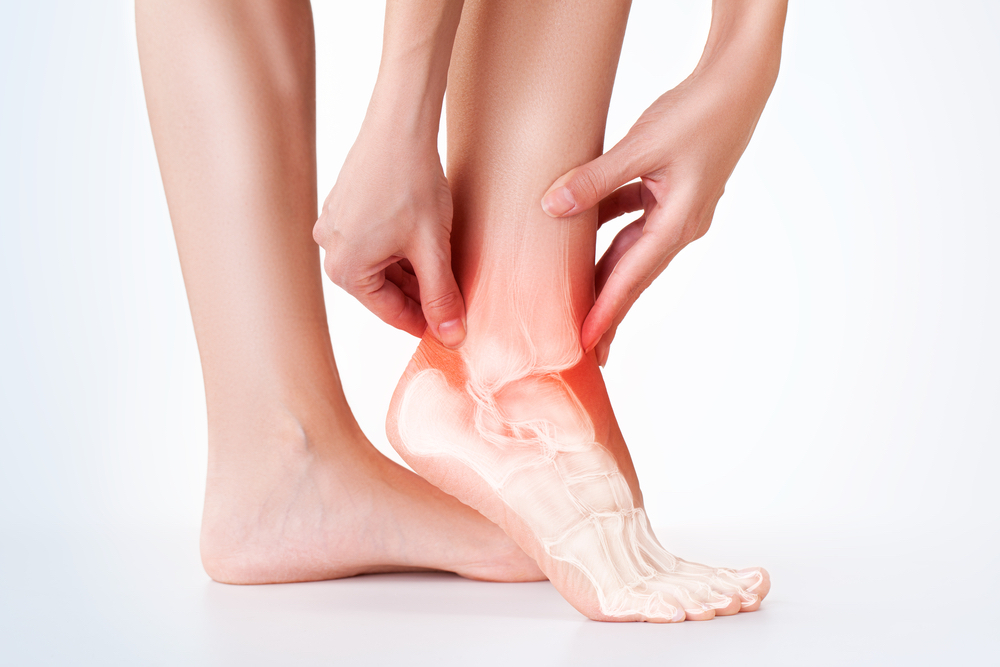 Cold weather can cause aches throughout the body, including your feet. So if you experience extra heel pain in the winter, you’re not alone. Continue reading to learn how to ease this pain and take care of your feet throughout the colder months.
Cold weather can cause aches throughout the body, including your feet. So if you experience extra heel pain in the winter, you’re not alone. Continue reading to learn how to ease this pain and take care of your feet throughout the colder months.
When it comes to frigid temps, you’re probably prepared for all the dry skin, cracked lips, and shivering under a blanket that occurs during the winter months. What you might not be ready for is the sudden flare-up of foot pain in cold weather, often from plantar fasciitis. Plantar fasciitis is a condition that causes stabbing, sharp pain in your heel that usually occurs from the moment you take a step out of bed in the morning. If you seem to notice this pain when temperatures take a dip, you aren’t alone.
“In my clinical practice, there is an uptake in new patient visits for plantar fasciitis during the winter season,” says Randall Thomas, DPM, FACFAS, a board-certified foot, reconstructive rearfoot, and ankle surgeon at Ohio Foot and Ankle, Inc. He says there are probably a few reasons for this, including changing out your footwear—closed-toed shoes can affect circulation and potentially impact plantar fasciitis—generally being less active, and just focusing more on your aches and pains during the winter months.
Do foot pain and plantar fasciitis really get worse in cold weather?
There aren’t a lot of studies to back up the idea that plantar fasciitis actually worsens in the winter, but researchers do know temperature changes can increase risks for injury and pain. The potential reason that foot pain worsens in cold weather is that dropping temperatures can affect circulation by constricting blood vessels, which can reduce blood flow to your feet. These effects on your circulation may also affect your nerves, which can lead to heightened pain sensations.
Thomas Trojian, MD, a family medicine and sports medicine physician and Professor at Drexel University, says he hasn’t noticed a seasonal-related uptick of plantar fasciitis in his practice. However, he encourages patients to seek care if they have any type of heel pain in the winter or otherwise. A trusted healthcare provider can help you determine the most likely underlying cause, which could be plantar fasciitis, nerve entrapment, a bone spur, or a plantar fibroma, says Dr. Trojan. “If the exam is consistent with plantar fasciitis, stretching activities are usually the place to start,” he says.
The best stretches for plantar fasciitis
Stretching is a mainstay of plantar fasciitis treatment because stretching helps to lengthen the plantar fascia, the band of tissue that spans from the base of your toes to the heel bone. There are several podiatrist-approved stretches you can do to relieve that pesky heel pain. If you aim to do these stretches consistently two to three times per day, you should expect to start feeling some relief after about six weeks, says Dr. Trojian.
Other steps you can take to keep your plantar fasciitis in check this winter
One of the best ways to ward off plantar fasciitis pain in the winter? Keep your shoes on, even when you’re indoors. Dr. Thomas recommends putting on your shoes first thing in the morning to get the most foot support throughout the day. “The floors are colder and patients are spending more time inside during the colder weather,” Dr. Thomas explains. “I strongly recommend supportive shoes, such as running shoes, or orthopedic sandals to provide arch support and shock absorption to the heel while at home.” If you’re strictly a shoes-off-in-the-house person, Dr. Thomas says it’s a good excuse to splurge on a second pair of sneakers. “If there is a concern for not wearing shoes in the house, many patients purchase a new pair of running shoes that they only wear in the house,” he says.
Another tip? Use the cold to your advantage. “Fill a bottle half-full of water, put it in the freezer, and roll it so you can get a massage of the foot,” Dr. Trojian recommends. “This can provide some temporary pain relief.” If you find plantar fasciitis pain—or any foot pain—gets worse in the winter, make your first stop at the doctor to ensure you don’t have another type of injury. Stretching and wearing supportive shoes are often enough to get you through the pain so you can ideally feel better— just in time for spring.
Original article published on wellandgood.com.







